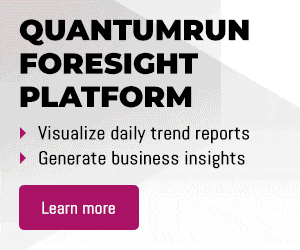Demand for AI talent growing fast: The relentless search for automation experts
Demand for AI talent growing fast: The relentless search for automation experts
Demand for AI talent growing fast: The relentless search for automation experts
- Author:
- August 17, 2022
Insight summary
The shortage of artificial intelligence (AI) professionals has led to fierce competition among companies and industries to hire skilled individuals, with businesses getting creative in recruitment and training. This trend is driven by the need for AI expertise in various sectors, including defense, marketing, and finance, as AI technologies become crucial for efficiency and innovation. The rising demand for AI talent is influencing broader economic and educational shifts, such as increased salaries, collaborations between universities and companies, and the development of new AI platforms and regulations.
Context for growing AI talent demand
Since the late 2010s, companies have experienced ongoing talent shortages for professionals trained in AI applications. The primary reason for this talent crunch is that AI is a relatively new and rapidly diversifying field, and few experts have the qualifications and experience needed to work in this area. As a result, a small global workforce trained in AI systems is set to benefit dramatically from this industrywide scarcity.
AI developers, engineers, researchers, and data scientists—the ballooning demand for these niche AI professions is driven by businesses looking to reduce costs through automation and efficiency. And since competition for AI experts is so intense, companies have become increasingly creative and flexible in their recruitment strategies. For example, these companies are aggressively hiring university graduates with AI-related backgrounds and providing them with in-house mentorship and training programs. These companies are also retraining their existing internal workforces with specialized AI skills, particularly the management of automation projects, while filling remaining talent gaps from tech vendors.
Meanwhile, the global defense industry is adapting to a rising need for AI professionals of their own. For example, the US military has doubled down on its investment in AI development and implementation. They drafted the first Department of Defense Artificial Intelligence Strategy in 2018 and established the Joint Artificial Intelligence Center to oversee all AI initiatives. In particular, geopolitical competition between the US and China has further driven the growth of AI talent demand as these countries race to establish themselves as the global leader in the field.
Disruptive impact
According to Georgetown University’s Center for Security and Emerging Technology, the market for AI talent is increasing, with positions related to AI in job postings almost tripling annually since 2010. Core AI positions involve creating technologies like machine learning and natural language processing, while some posts comprise implementing AI solutions (e.g., statistical software and test automation). One surprising finding from tech research firm Gartner shows that the strongest demand comes from business units outside of information technology (IT), even though IT’s need for AI talent has tripled between 2015 and 2019.
Departments that are hiring AI talent in high volumes include marketing, sales, customer service, finance, and research and development. These teams use AI talent for applications such as customer churn modeling, customer profitability analysis, customer segmentation, cross-sell and upsell recommendations, demand planning, and risk management. Asset-centric industries, such as those supporting predictive maintenance or workflow and production optimization projects, are also hiring AI talent en masse. Data scientists and others hired into these departments typically have a specific use case in mind so that they can learn the complexities of the business and remain close to automation implementations.
However, while the need for AI professionals has shot up, recruitment strategies have not kept up in general. Chief information officers (CIOs) and human resource leaders should work together to rethink what skills are necessary for an AI-focused employee on day one. They should also explore candidate criteria adjacent to traditional hiring specifications. Additionally, CIOs should think creatively about IT’s role in governing and supporting diverse AI initiatives and the evolving teams driving this activity.
Implications of the rapidly growing demand for AI talent
Wider implications of continued heightened demand for AI talent may include:
- Inflationary pressures as companies are forced to spend ever larger sums on recruitment, salaries, and benefits for AI talent. These rising costs may be passed down to clients and consumers.
- Startups increasingly struggling to compete for AI talent against tech giants who can afford larger salaries, thereby slowing startup growth overall and increasing the costs venture capital must spend on startups to help them grow.
- New incentives to develop platforms that smaller organizations can use to implement plug-and-play AI solutions without the need for internal AI experts.
- Universities and companies collaborating to create specific AI-related degrees, scholarship programs, and centers of excellence. Likewise, more young people will likely be motivated to enter the AI field due to lucrative opportunities and potential.
- The defense and military sectors increasingly hiring AI talent to develop more autonomous systems for strategic and accurate airstrikes.
- Governments coming together to create clearer regulations on AI ethics, including policies on hiring people to deploy potentially deadly systems.
- Intense competition for global AI talent, resulting in higher sign-up bonuses and other perks and flexibilities.
Questions to consider
- How else do you think the increasing demand for AI professionals will benefit future workers in this field?
- How can companies create better recruitment strategies to hire AI experts?
Insight references
The following popular and institutional links were referenced for this insight:



